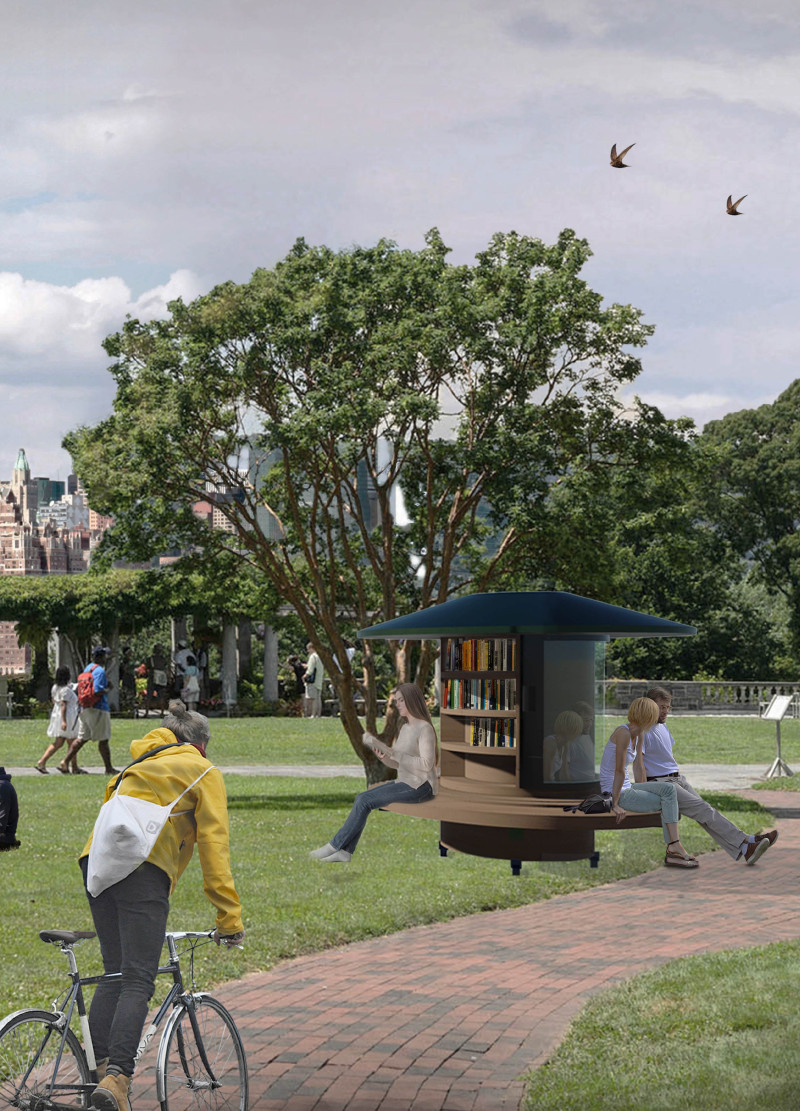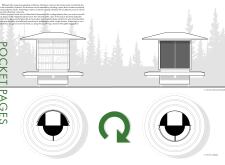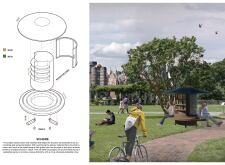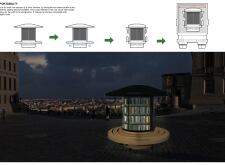5 key facts about this project
Pocket Pages is an architectural design focused on changing how libraries function in urban areas. Located in pedestrian-friendly environments, it aims to create a space where books are accessible and community-oriented. In a time when digital information is readily available, the design emphasizes transparency and encourages engagement with literature.
Design Concept
The design promotes an inviting atmosphere with its modular and curved structure. This shape allows for easy access from all sides, making it user-friendly. By encouraging movement around the pavilion, the layout fosters interaction between people and books, inviting both casual readers and those looking for a quiet spot to gather.
Materials and Aesthetics
Wood is the primary material used for the structure, providing a warm, tactile experience for users. The dark green metal details complement the wood and create a visual connection with the surrounding natural environment. This choice of materials enhances the overall feel of the space, allowing it to transition smoothly between park settings and urban streets.
Functional Elements
Power outlets are strategically integrated into the shelving, addressing modern needs for connectivity. This allows individuals to charge their devices while also engaging with the available literature. The built-in seating adds comfort and promotes social interaction, encouraging small gatherings and casual meetings among users who may discover new books together.
Design Flexibility
The modular nature of Pocket Pages allows it to fit into various urban contexts. Its design can be adjusted, reducing its width from 8 feet to 6 feet by folding elements like seating and the roof. This adaptability means it can be easily transported and set up in different locations, creating opportunities for a community-centered system of book exchanges.
Lighting plays a key role in enhancing the user experience. Welcoming and soft illumination makes the pavilion usable both during the day and in the evening. This attention to detail contributes to a friendly and accessible environment, encouraging people to stop by, pick up a book, or simply enjoy the space as part of their daily routine.






















































